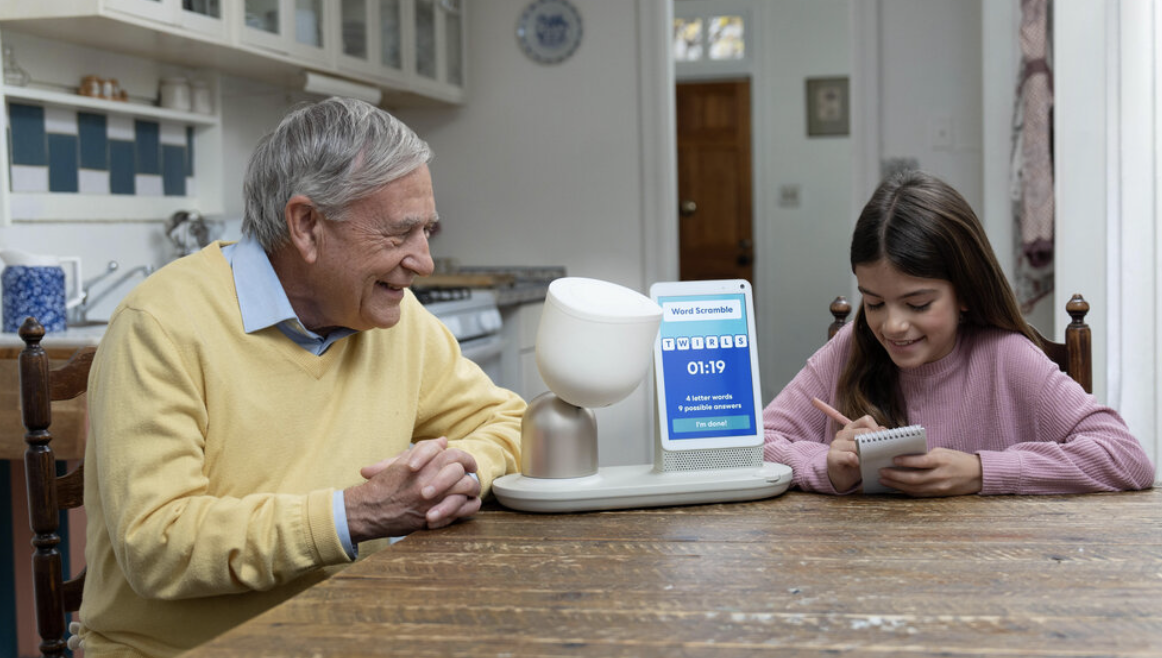Inclusive Design: Older Adults Deserve a Seat at the Table
August 12, 2020 by Intuition Robotics Team
We live in an aging world. According to UN data, by 2050, about 16% of our population will be over the age of 65 (up from 9% in 2019), and this segment of the population is growing faster than any other age group. Today, millions of seniors continue to make inspiring strides, remaining active and thriving well into their 80s and 90s. Still, it’s also no secret that as we age, we naturally lose some of our physical capabilities, like our vision, hearing, strength, and agility.
So why are there still so few products out there that take older adults’ needs – as well as the unique needs of so many others – into account? One of our advisors, Don Norman, recently wrote a piece on this very topic, and it inspired us to dig deeper. Why aren’t there more products designed with older adults in mind? Is it asking too much for the items we rely on each day to be easily seen, heard, and utilized by older consumers?
Yes, of course, there are some products out there that were specifically built for older adults – like walkers, canes, hearing aids and the like – but they practically scream “senior” and they tend to come with a certain stigma or sense of shame. This is all wrong. Products designed to incorporate and facilitate older adults’ needs shouldn’t be obvious or embarrassing – they should be universal items of pride, suitable and beneficial for virtually everyone.
We firmly believe that a change in this paradigm is long overdue. When it comes to more inclusive design, seniors – as well as every other underrepresented minority – deserve a seat at the table, and for their voices to be heard, now more than ever.
Tech design needs reform, but it doesn’t stop there

It goes without saying that the vast majority of technology on the market today was not designed with older adults as the primary end-users – with tiny buttons, extremely small fonts, low-quality sound, and difficult-to-decipher on-screen visuals. The products and interfaces that might seem easy and intuitive for some people to access aren’t necessarily so simple for others.
When asked about difficulties with her iPad, Beatrice Karey, 92, replied “It is out of control. I tell you, I was reading and right in the middle of reading it, it disappeared, and I had no way of getting it up!” Annie Gabel, 95, also experienced similar frustrations with her iPad. “I’ve had mine for a few years already, it takes some getting used to...I couldn’t get it to open because it needed the finger on the button and it didn’t think I had a finger!”
When asked about messaging and WhatsApp, despite changing the font settings on her phone to the largest possible size, Karey noted, “I can’t see it at all, the writing size should be larger.” She also found that her TV remote had too many unnecessary, confusing buttons, and she yearned for something she could easily control via voice.
But these design frustrations transcend far beyond technology. There are so many everyday items and scenarios – ones that often don’t even cross the minds of younger consumers – that are extremely discouraging for older adults. Karey even mentioned that she finds it so difficult to read products’ labels and prices, and that she has to walk around stores with a magnifying glass just to deduce the necessary information as she shops. But it doesn't stop there.
Many everyday products work against seniors’ needs and abilities, such as:
- Tiny instructions, warranties, and manuals that come with most products
- Tough-to-decipher puzzle pieces and game components (dice, cards, etc.)
- Small-print books, newspapers, magazines, labels, and restaurant menus
- Jars and packaging that require significant physical strength to open
- Household gadgets with miniscule holes, screws, and pieces
And those are just to name a few – the list goes on and on. Clearly the current standard is highly flawed – so how can we begin to create a more inclusive environment going forward?
Designing products that work for everyone
 As noted above, older adults have their own unique set of needs, abilities, and preferences – so does every other minority and marginalized group within our society. We all deserve access to products that truly serve and benefit us – especially ones we rely on most frequently. So how can we design more inclusive, comprehensive products for us all?
As noted above, older adults have their own unique set of needs, abilities, and preferences – so does every other minority and marginalized group within our society. We all deserve access to products that truly serve and benefit us – especially ones we rely on most frequently. So how can we design more inclusive, comprehensive products for us all?
Instead of closely dissecting each component of every product, to ensure that it serves its purpose regarding the unique needs of each individual, a more realistic, scalable approach is to think about the big picture. Companies designing new products should constantly stop to ask themselves, Would this product be truly accessible and beneficial to everyone, or only a small portion of the population? If not, what components can be altered so that it can be?
When we design and create products that work for everyone, everyone wins.
For example:
- By making text more legible – on an app or in print – we can all see it more easily, reducing strain on our eyes and as well as long-term visual impairment.
- Clear, straightforward interfaces – on a website, phone, tablet, remote, or otherwise – are more seamless, intuitive, and beneficial for us all.
- Lighter, sleeker portable items – like wheelchairs, strollers, or shopping carts – are much more feasible and manageable for everyone to push around.
- Larger pieces and buttons – for puzzles, games, household gadgets, and kits (i.e. for sewing, repairs, etc.) – are easier for everyone to maneuver around.
But these are just a jumping off point – with so many of the products we use every day, the opportunities for more inclusive design are endless. When it comes to designing new products (or re-envisioning existing ones), the sooner we begin to shift our focus towards thinking about the big picture – keeping everyone in mind – the more we all stand to gain.
Going forward: Inclusive design can truly help us all
 As a society, the way we think about product design needs to change dramatically. It’s time to shift our focus, toward designing products that provide extensive value for all, and serve the needs of the many, not the few. We designed ElliQ specifically with older adults in mind – yet the technology and functionality behind ElliQ is universal, and could be utilized by virtually everyone.
As a society, the way we think about product design needs to change dramatically. It’s time to shift our focus, toward designing products that provide extensive value for all, and serve the needs of the many, not the few. We designed ElliQ specifically with older adults in mind – yet the technology and functionality behind ElliQ is universal, and could be utilized by virtually everyone.
Older adults – as well as all other underrepresented individuals – deserve products that not only suit and facilitate their unique needs, abilities, and preferences, but that evoke a sense of pride and empowerment as they use them. We sincerely hope that more companies will continue to think outside the box, and design products that everyone can truly derive benefit from. The time to act was yesterday – now, let’s get to it.
Recent posts
.png)
The benefits of an AI-driven social robot for area agencies on aging
by Intuition Robotics Team


